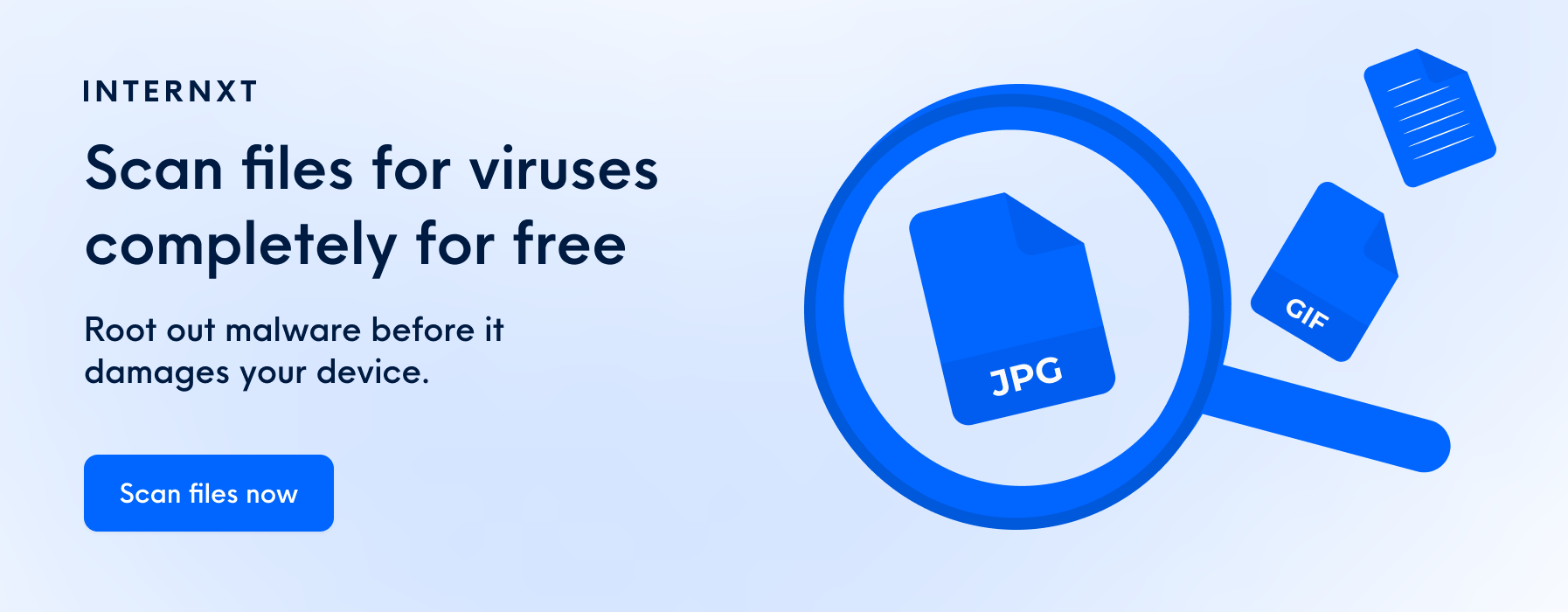What Is Ransomware: Internet Survival Strategies

As an Internet user, you may face various terrible cases of data theft or illegal perversion by third parties into your personal virtual space. Of course, any attack on your device is unpleasant, but in some situations, a ransomware attack can have immense consequences for you and your data.
This is why we are talking about one of the possible types of cybercrimes that threaten our digital safety: ransomware attacks.
Ransomware is a category of malware that enables hackers to access their target's files. Once hackers gain access to these files, they aim to extort a ransom payment in exchange for the decoding key, giving back the user control of their device.
The core idea is that developers of such programs create such intense fears of fear or urgency that the victim has no choice but to pay the ransom or risk losing their files.
What Is Ransomware?
Ransomware is used by cyberattackers to steal your data or use other ways to cause harm, a common tactic of ransomware is encrypting your files rendering them unreadable / unusable.
As a result, while several ransomware programs work slightly differently, they all hope to gain the same result: ransom payment. The most widely spread are the following:
- Encryptors. The most popular and dangerous type. It encrypts user data, rendering it unusable. Access is blocked until the victim pays for a decryption key.
- Scareware. It is a forged software that tries to convince you that your device has a virus, and you can delete it once you pay the ransom.
- Ransomware as a Service or RaaS. It is a system where cybercriminals sell malware and various tools to third parties who carry out the attacks. By doing so, cybercriminals can exchange their ransomware services for an exchange of profits from their customers.
- Lockers. Such programs block access to your device entirely so you cannot use it; you only see the demand to pay a ransom on screen, possibly with a countdown to cause more psychological pressure.
So, it is clear that ransomware is a massive threat to our online security, made even more severe because it affects all types of gadgets, causes various problems, and can access our software in multiple ways.
Generally, infection vectors depend on and aim at the system's most vulnerable part. But the most successful methods are:
- phishing
- unpatched vulnerabilities in software
- remote desktop protocol
- credential abuse
Phishing is a standard method of infecting a device through links or files containing harmful elements. More often than not, phishing happens via email, aiming to get users to click on what they believe to be a legit file, but it is a malicious link or downloads a file to install the ransomware software.
Furthermore, attackers can use Microsoft Remote Desktop Protocol which enables remote access to a desktop or server. Cybercriminals commonly use RDP attacks to steal data or install malware or ransomware.
To resist these attacks, you must regularly update your software and passwords or hire a Microsoft Dynamics developer to provide support.
Attackers can also use different websites or apps with not-so-good security systems. Thus, any system with access to the Internet and weak protection measures can be an infection vector.
Despite all the variabilities ransomware has, there is a specific pattern it follows, which generally involves:
- Infection through various vectors
- Encrypting or blocking data
- Ransom extortion attempt
Internet Survival Strategies Against Ransomware
As you can see, ransomware can be a severe problem requiring your attention. That is why it would be great to learn more about it and ways to tackle it. But, of course, there is no necessity to do everything by yourself, and you can hire dedicated programmers to help you deal with that issue.
So we prepared several tips on how to prevent ransomware attacks. They include some advice on what to do or not to do to minimize your risks of becoming a victim of such an attack, such as using cloud backups to protect agianst ransomware.
So we prepared several tips on how to prevent ransomware attacks. They include some advice on what to do or not to do to minimize your risks of becoming a victim of such an attack, such as using cloud backups to protect against ransomware.
If you already faced that problem, collaboration with dedicated teams or freelance programmers may be a solution.
But the strategies below can still be a helpful guide for internet users that may visit the internet more casually, as they describe the most common and valuable variants to avoid various unpleasant situations in the virtual space, especially ransomware attacks.

1. Regularly Backup Your Data
As ransomware implies data theft or damage, you can experience some problems with losing necessary data after the attack. That is why it is essential to do regular data backups and keep all your data or at least the most useful one at alternative sources or various devices.
For this, you can use your chosen cloud storage provider. Some people also prefer to implement bring-your-own-device policies, physical hard drives, or flash drives. The choice depends only on your abilities, demands, and data type.
By conducting regular backups of your devices, you reduce the risk of losing your data, as you can reaccess the most recent version of the file from any device. By following this protocol, you can significantly decrease the stress levels caused by a ransomware attack, which is why it is one of the most widespread ransomware prevention methods available.
Other best practices for data backup include the following:
- Follow the rule 3-2-1, which means having 3 different copies on 2 types of storage drives and at least 1 copy on the external drive
- Use built-in computer backup software to spend less time on backups
- Do backups manually if you want to copy not all data
- Use external hard drives or USB flash drives
- Set an automatic copying of the data to the cloud storage
- Address professionals, for example, remote developers, to get help.
2. Keep Your Software and Systems Up-to-Date
Software updates are vital in maintaining system security, stability, and performance, allowing your software to defend your devices from hostile attacks and ransomware.
Firstly, updates influence the security patches as they may contain them. It can lead to the elimination of vulnerabilities and weaknesses uncovered in the software. As hackers always seek vulnerable points to attack to gain access to your information, software updates provide a solid defense system against these attacks.
Secondly, regular updates help you to stay visible to vendors and technical support. As developers update software regularly, they stop maintaining the previous ones, especially the first versions.
So the longer you go without updating your software, the longer you expose yourself to more attacks involving ransomware or other cybercrimes. To address this issue, you can set up regular updates on your device or implement a system where you regularly check and keep up to date with new software updates.
3. Exercise Caution with Emails and Attachments
As we learned before, one of the possible ways to store malware is the spreading of infected links and files through email, so it is essential to be critical of any emails you receive from unknown senders, and if you are sending any critical information, use encrypted emails or a temporary email for additional safety.
You may need practice to recognize suspicious emails easily, but there are also some general rules you can follow. Pay attention to the sender and subject of the email, review the content before opening any attachments, and especially avoid opening unknown files, clicking on unknown links, and downloading suspicious attachments.
4. Use Strong and Unique Passwords
This may seem obvious, but passwords are one of the crucial elements to protect your software - which is why hackers spend a lot of time and effort to gain access to them. For the most powerful passwords, you can generate them quickly using a password generator.
A password generator will give you a long, unique, and complex password, the three essential factors for the best password. What’s more, it avoids any personal information connected to you (such as birthdays), which can be gained from social engineering attacks, and as a result, giving hackers access to your password.
Enhancing your password management becomes more manageable with the aid of password managers. These tools can generate unique and trustworthy passwords for all your accounts and securely encrypt them for storage.
As a result, password managers serve as an excellent instrument for password security, contributing to your protection against cyber threats.
5. Enable Two-Factor Authentication (2FA)
Two-factor authentication ensures an extra layer of security to increase the level and effectiveness of your online account's protection. It is an additional layer of security to your accounts, as it requires another way of verification outside of your password. This extra layer can be a verification code via SMS, passkey, or biometric authentication.
In addition to these advantages, you can implement 2FA for various accounts and devices you use. It increases the level of security and protection of your data very much. But remember to check and update your settings regularly, especially when you change devices or face some security issues or threats to your accounts.

6. Invest in Reliable Antivirus and Anti-Malware Solutions
Suppose you want to avoid investing in a dedicated development team but still want to protect your data. An alternative way to install antivirus and anti-malware programs exists in that case. For similar results that you could get from a professional, it is important to invest in reliable programs that will protect your system as and when required.
Selecting a service necessitates consideration of several essential attributes that a robust antivirus software ought to possess. These include:
- real-time scanning capabilities
- detection and eradication of malware
- access to theft or virus reports
Free virus scanning tools are also available if you are suspicious of a particular file on your device.
7. Educate Yourself and Your Team
The final tip we would like to share to prevent ransomware is to try and increase your knowledge by staying up to date with what's happening in the cybersecurity world.
If you are interested in learning more about ransomware, or internet security, you can read blogs, gain cybersecurity qualifications, or, for a more relaxed approach, check out some popular cybersecurity TV shows.
Responding to Ransomware Attacks
When it comes to countering ransomware attacks, you may wonder about the best steps to take if the worst happens to you or your device; these steps will be a good starting point.
Firstly, familiarize yourself with identifying a ransomware infection through the tips mentioned in this blog, and stay updated with tech news. In the event of an infection, promptly report the incident to the relevant management team at work or a specialist who can help eliminate the malware from your device.
Finally, you will need a secure cloud storage service to keep your information and important documents and files safe. The best option would be Internxt, a cloud storage provider for your documents, files, or photos that encrypts your data and gives you power over who can access and view your files.

How To Stay Safe Against Ransomware Attacks
There are many horror stories out there regarding the potential threats of the internet, and ransomware is one of the most dangerous and common attacks to look for.
However, the best form of attack against these threats is a good defense,
Despite the threats that loom on the internet, there are also several countermeasures to shield you against even the most powerful ransomware.
Therefore, if you implement cyber hygiene advice in your digital life today, you can fight against ransomware and stay safe on the internet now and in the future.

